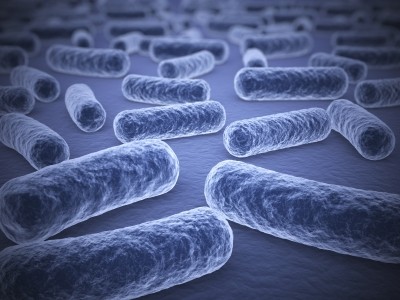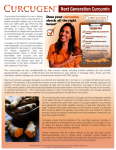Special edition: Prebiotics
Prebiotic evolution: From earth oven to pizza oven

Jeff Leach is a well-known name in gut health circles: He is an archaeologist by trade and head of Paleobiotics Lab, a New Mexico-based independent research group.
Since 2006 however, Leach and business partner Randy Crochet have been building an American success story, and it’s based on Leach’s intimate knowledge of prebiotic fibers.
Five years on from its inception and stores are appearing all across the US, with Leach predicting 75 by the end of 2011, and over 200 by the end of 2012. Dubai already has its own Naked Pizza, with stores slated to open in Lebanon, Australia and India this summer. London and Ireland are also on the agenda.
DigitalCoCo, a digital brand development and social analytic firm, recently recognized Naked Pizza as a Top Five Most Influential Fast Casual Brand.
Coming to a grocery store near you
Not content to be a food outlet, the company is set to enter the grocery market with a range of prebiotic pizza bases fortified with probiotics. “We’ve tested the product, and we’ve got the manufacturer nailed down,” said Leach. “We’ll be rolling it out over the next few months.”
Formulating a gut-friendly pizza base requires thought: The original incarnation of the pizzas was formulated with 12 types of whole grain, including amaranth and buckwheat, and fortified with Beneo Orafti’s Synergy1 prebiotic, and Ganeden’s heat resistant Bacillus coagulans strain.
This has now changed and the company is using inulin from Mexican-sourced agave. “Because of my research, it is easier for me to explain the benefits.”
The company now uses a mixture of medium and long-chain inulin from agave, “which performs just as well”, he said.
And the science is emerging to support these claims: A study by University of Reading researchers last year was reportedly the first to show the prebiotic potential for Agave fructans for boosting bifidobacteria and lactobacilli populations (Journal of Applied Microbiology, June 2010, Vol. 108, pp. 2114-2121).
From earth ovens to pizza ovens
Despite admitting that “Naked Pizza has taken over my life”, Leach still finds time for his first love: Research. He’s off to South Africa in July to work with Texas State University and local researchers to model the landscape and relate how modern plants are consumed by the indigenous population and how they would have been consumed thousands of years ago.
“Interestingly, in South Africa people consume plant X because it alleviates diarrhea, and it turns out plant X has inulin. The people don’t know that, but it’s there.”
The majority of Leach’s research was performed in the American Southwest where he studied the large earth ovens used by our ancestors to cook subsurface tubers over the course of several days.
By cooking agave – the most abundant plant in the White Mountains in Arizona – and other inulin-rich plants in earth ovens, where temperatures were less than 100 degrees Celsius, the loss of inulin from the cooking process was minimal, being less than 10 per cent.
Studies have shown that inulin-rich plants dominated the dietary intake of our ancestors in these regions, with about 60 per cent of the calorific intake coming from such sources. This would equate to a total dietary fiber intake of between 250 and 400 grams every day, with between 50 and 100 grams of inulin every day.
Modern intake recommendations for inulin and oligofructose are between five and eight grams per day.
Caveman cuisine
The idea of looking to the past for inspiration for the future is catching on. Multinational giant Unilever unveiled a research program recently that aims to re-create the diet of the caveman and apply modern biological science to it in the hope of unlocking some long-forgotten dietary knowledge that was instinctive to our ancestors.
Leach admits to reaching out to the Unilever scientists for a discussion, and is happy to see that “researchers are finally linking archaeological and ethno knowledge to microbiology and genomics”.
Prebiotics and probiotics have often been pitted against each other in the functional food category, he notes, but researchers are now appreciating the benefits when used together as synbiotics.
Five to ten years from now Leach predicts a much greater diversity of synbiotic products on the market.
“People think if they eat three bowl of cereal, get their 35 grams of fiber, then they’re fine. That’s exactly what you don’t want to do.
“50,000 years ago our ancestors were consuming a diversity of chain lengths of inulin on a daily basis, and there was no refrigeration so they would have been consuming fermenting foods with probiotics. They consumed an extraordinary diversity of these.”
Looking back to look forward
A circle has recently been formed for Leach – his research into prehistoric prebiotic intakes led him to co-found Naked Pizza, and the success of the pizza business is now being channeled into scholarships for archaeological and anthropological research “with a modern application”.
“We’re using the pizza business as a funding agency for research,” he said. “We gave one scholarship to a student in South Africa last year, and we’ll give several more this year.”
















